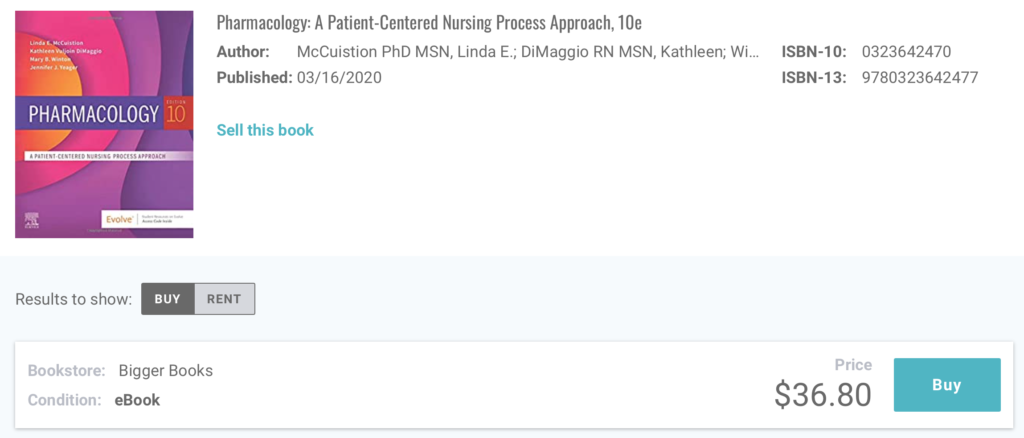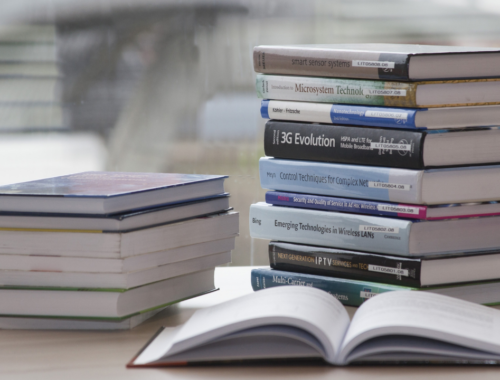
Textbooks come in many kinds and sizes! We’re used to hardcover and softcover (paperback) books from our childhood, and now eBooks are becoming more and more popular, also at colleges. What about loose leaf textbooks, or so-called binder-ready editions? They’re not as common but still used from time to time, and there are rumors that these textbooks are cheaper. What’s the deal with loose leaf textbooks? Let’s explore all the ins and outs together.
What is a Loose Leaf Book?
Essentially, a loose leaf textbook is a stack of paper with three punched holes that is ready for binding. It does not have any cover, and the pages are neither glued nor stitched. Loose leaf textbooks are also known as a la Carte or binder-ready editions.
Don’t be confused by all these different names since they all refer to the same book type. When you see ‘a la Carte’ sign, it implies that the textbook will be printed by the publisher on demand (and it would be even harder to sell it back). Since a loose leaf textbook is easier in production, it’s often cheaper compared to new paperbacks and especially hardcovers.
IMPORTANT: Loose leaf textbooks are identical in their content with hardcovers and paperbacks. They follow the same layout and page numbering, and only the binding type (or the lack of such) is different. You should always check if a loose leaf edition comes with an access code if you need one.
Loose Leaf Book Binding
The fun thing about these editions is that it’s up to you to assemble the book! You can bind it yourself in a binder as a book or use the pages alongside your lecture notes and other printouts. We recommend screw post binders for durability or regular binders that are widely accessible.
Check Pinterest and YouTube for practical advice on how to bind your textbooks. This video nails down the screw-post binding method that is excellent for loose leaf textbook.
Benefits of a loose leaf book:
- On average, a loose leaf textbook costs less
- There is no need to carry the whole heavy pile of papers around the campus — just get the necessary pages.
- You can personalize the book: rearrange the materials and bind them as you like.
Disadvantages of a loose leaf book:
- Loose-leaf books are hard to sell back. If you are used to selling textbooks after each semester, think twice when buying loose leaf books.
- Binder-ready textbooks are fragile and easy to damage since not protected by a cover, and pages might not be coated for durability. But it’s in your power to make such an edition more durable — always carry in a hard binder that can accommodate all the pages at once.
- If you don’t bind the book at once, you risk losing or damaging some pages. This would make it impossible to sell the textbook back.
Where to Buy a Loose Leaf Textbook
You have the same options as usually: campus bookstores, publisher websites, and online marketplaces. Buying loose leaf editions online saves a lot of time. Moreover, online bookstores typically provide a good value for money since they can cut some operational costs.
TIP: BooksScouter will help you find the best offer: search through more than 30 various bookstores at once.
What to do with a Loose Leaf Textbook
Sell Loose Leaf Books
As mentioned before, it’s not always possible to sell back binder-ready editions. There are several conditions that you have to meet before offering your book for sale.
ISBN. Not all loose leaf textbooks have ISBN codes, especially a la Carte editions (it depends on the publisher). It is impossible to sell a book that does not have an ISBN.
Also, make sure that you use the ISBN printed above the barcode; you don’t want to put in a code for a paperback that is often printed alongside other bibliographic information on the title page, for example. If you have an ISBN, run it through the BookScouter search engine to see if any vendors offer a good price for your edition!
Conditions. When you’ve found a vendor via BookScouter, check the buyback conditions and requirements of this vendor. It goes without saying that you can only sell loose leaf books that have all the pages (and in the right order!). Your textbooks should not be water-damaged.
If you fit these and other vendor-specific conditions, sell the book directly through BookScouter and grab your money!

Alternative: Donate and Recycle Loose Leaf Textbooks
If you can’t sell loose leaf editions you own and still want to get rid of them, you should recycle them properly. Usually, it should be recycled with other paper and cardboard materials (make sure to unbind the papers and save the binder).
However, before recycling a loose leaf textbook, ask around. Maybe some of your fellow students are interested in owning this edition!
Your Takeaway
Loose leaf textbooks will find their audience among those students who appreciate the convenience. Although these books are usually a bit cheaper, it’s troublesome to sell loose leaf textbook back, and the buying price is not too high anyway.
For example, it’s certainly cheaper to get an eTextbook of Pharmacology: A Patient-Centered Nursing Process Approach (ISBN 0323642470) for $36 than a loose-leaf textbook (ISBN 9780323750660) for $90 that you can only sell for $10 afterward.
BookScouter will help you compare various options and see if buying, for example, a paperback book and selling it afterward is cheaper than going for a loose leaf option.
Loose Leaf Textbooks FAQ
Is the content of a loose-leaf textbook different from hardcovers?
No, the two versions should be totally identical if they refer to the same edition of the textbooks. The only difference is in the manufacturing process.
Are loose-leaf books cheap?
They are cheaper than new hardcovers because it’s easier to produce and distribute them. However, the price should still cover the costs of printing, running the publishing house, author’s royalties, etc., so don’t expect a loose leaf book to have a bargain price.
However, getting a used copy of a loose-leaf book (or any other edition) is definitely cheaper. You’ll save even more money if it’s possible to get a used hardback and sell it back for almost the same price. Bookscouter helps you check and compare all the offers, and Pro Tools will maximize your profit.
Where can I buy loose leaf textbooks?
You can get them at the same place where you purchase your college books. While campus stores might not have them available in sufficient quantities, online marketplaces are always well-equipped. Check your options on BookScouter.com.
Can I sell loose leaf textbooks to BookScouter?
You don’t sell directly to BookScouter — it is a price-comparison platform through which you can find the best vendor and sell to them instead. Consider that vendors have their own condition policies that you should be familiar with. Run an ISBN code on BookScouter.com and check if any vendor is buying a loose leaf textbook you want to sell.






